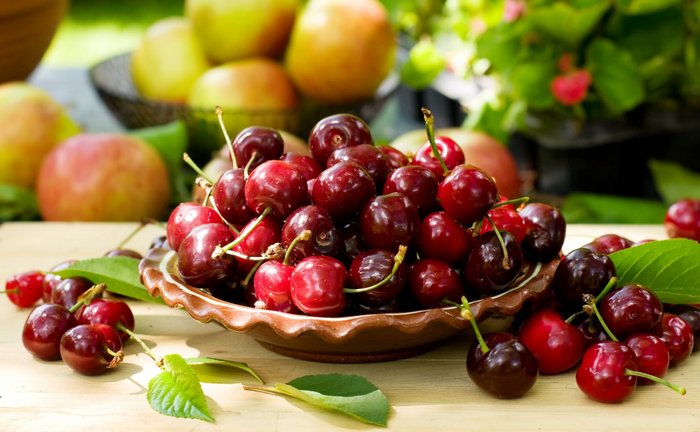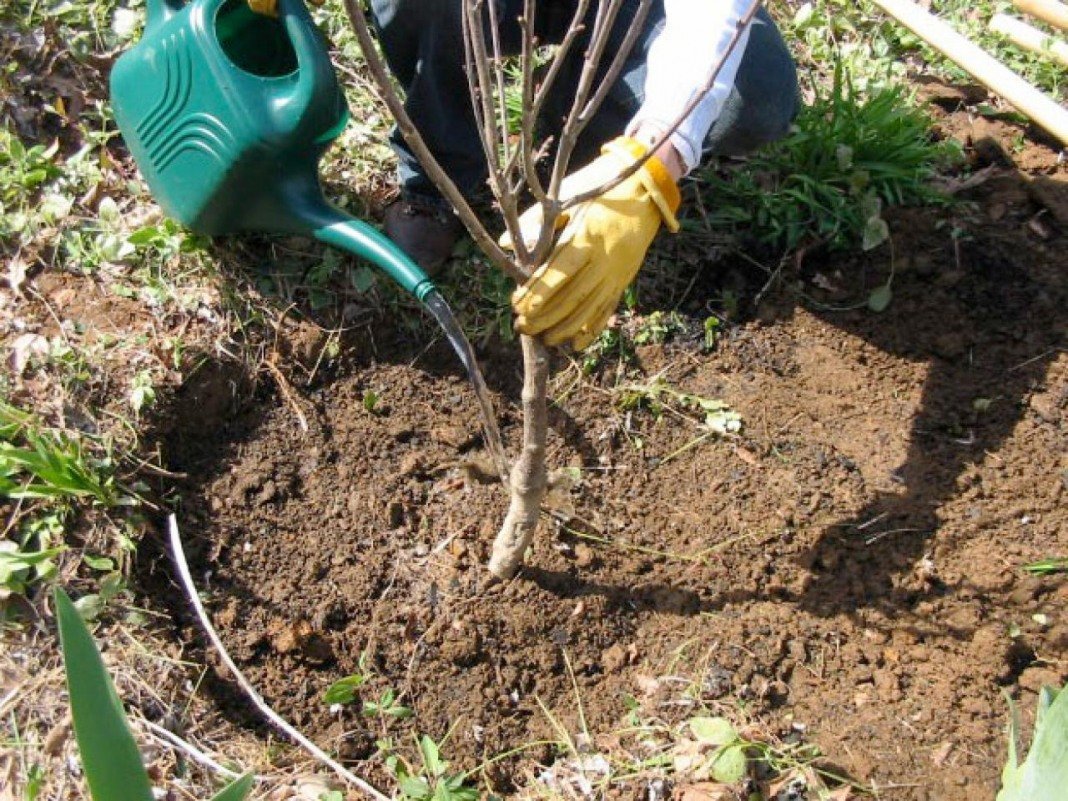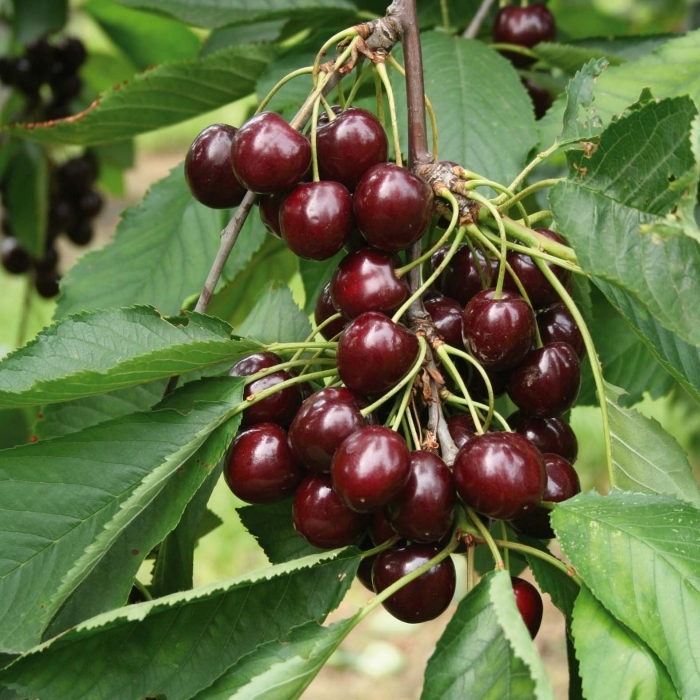Content:
This cherry variety arose by chance as a result of pollination of the Ideal tree, which was only a year old, with other varieties of this species. Shrub cherry Schedra was bred in 1959 at the Sverdlovsk station. This plant was zoned in the Volga region, the Urals and Western Siberia. At the same time, it is widespread in Belarus and Ukraine.
Description of the variety
Cherry variety Generous was so named for an obvious reason. This variety has excellent yields. From a bush, you can get from 10 to 15 kg of berries. It is a self-fertile plant. At the same time, it is possible to improve its yield if pollinating trees such as Maksimovskaya cherry are located nearby.
Flowering occurs at the end of May, and the berries ripen in the last decade of August and the first decade of September, they do not reach this state at the same time, so the harvest is harvested in several stages.
A distinctive feature of the Cherry Generous is its excellent winter hardiness, according to the description of the variety, the bush is quite capable of surviving frosts at this time of the year when the temperature reaches -45aboutC. In such frosts, neither its bark nor shoots suffer. Likewise, the plant copes with very noticeable frosts during flowering, which are not excluded in many areas where it is cultivated (the Urals and Siberia).
Cherry tree Generous has the following characteristics:
- it is bushy in shape;
- the branches of the plant are spreading, the shoots look up;
- medium-sized, pointed buds;
- cherry leaves:
- have an oblong oval shape;
- they have sharp tops;
- the edges are shaped like teeth;
- the surface texture is glossy;
- the color is deep green;
- flowers of a tree of this variety:
- grow in inflorescences;
- are white;
- the petals are freely arranged.
The Fruit of the Generous has the following parameters:
- large berry, its weight is from 3 to 5 g;
- round shape;
- the color of ripe fruits is dark red;
- they do not crumble from the trees, remaining on the branches until they are collected;
- the bone is rather large;
- its separation from the pulp occurs without difficulty;
- the peduncle of this variety is thin and long;
- the fruit pulp itself has a watery consistency;
- its taste is very pleasant, sweet with sourness;
- also varietal berries have a characteristic cherry aroma.
The pulp of the cherry bush variety Schedraia has the following chemical composition:
- 12.2 percent dry soluble compounds;
- 6.7% sugar;
- 1.5% acids, in particular 100 grams of pulp accounts for 13.2 milligrams of ascorbic acid;
- for the same amount - 318.2 milligrams of vitamin P.
The plucked fruits can lie for about a week.
Cherry planting and aftercare
Planting a seedling is best done in spring. With regard to soil, bush cherry Generous is unpretentious, its requirements are significantly lower than, for example, for cherries. At the same time, the summer resident will receive optimal results if he allocates a place for the seedling:
- on a hill, not subject to flooding;
- on an area that remains dry constantly;
- with light sandy loam soil;
- with an abundance of light and no shading;
- protected from the north winds.
The gardener needs to do the following:
- dig over the surface without going deep.Proceed;
- then after thirty days add fertilizers to the soil. Organic - slurry to which water was added, properly rotted compost or manure. Mineral - 80-100 g of superphosphate per square meter, about 50 g of potassium sulfate for the same area;
- they also dig a hole in the fall: diameter from 70 to 90 centimeters, depth - up to half a meter;
- just before planting, a special soil is placed at the bottom of this recess, which is prepared for these purposes. This is a mixture of the following components: the top layer of the soil, which forms its basis, a kilogram of ash from burning trees, 15 to 20 g of potassium chloride, 30 g of superphosphate;
- then the seedling itself is placed inside this mound, which is then buried as tightly as possible. In this case, care must be taken that the neck of the root is located above the surface of the earth;
Following the planting, a hole is equipped for watering around the pit, the sides are made high. Immediately after that, water is poured into the hole with a volume of 3 to 4 buckets, then mulching with compost and peat is performed.
After the seedling has taken its place, for the next two years, it does not need too much care. It will be quite enough:
- water the cherries on time;
- weeding regularly, removing weeds;
- loosen the soil around the bush from time to time;
- also in the fall, they dig up the soil near the cherry, deepening by 10 centimeters, while acting with caution so as not to damage the roots of the cherry.
Two years later, that is, at the beginning of the third year of the cherry's presence in this place, the roots of the tree are fed for the first time. For this purpose, in the springtime, urea or ammonium nitrate, that is, nitrogen-based compounds, are introduced. In autumn, mineral fertilizers, potassium sulfate and superphosphate are added to the soil.
After the tree begins to bear berries, fertilizing with nitrogen fertilizers is performed twice a year. The first time - in early spring, and the second - after the bush has faded. When digging the soil, potassium and phosphorus are added in the fall. The application of organic compounds is carried out once every two years. Cherries are limed every five years.
Water a young tree as the soil dries out at the rate of 3-4 buckets per square meter of soil.
When the plant begins to bear fruit, it is watered no more than three times per season:
- the first time - after the plant has bloomed;
- the second - during the period when the berries ripen;
- finally, the third - before the cold weather, in October.
Each time, the procedure is carried out at the rate of at least five to six liters of water for each square meter of soil.
They also prune the tree every year. For the first 4–5 years, it is formative, the gardener creates a crown. An adult bush has 10 to 15 key branches that should be healthy and viable. After they have formed and strengthened, subsequently pruning should only be corrective. It is also required to eliminate branches that grow inside the crown.
When removing diseased and old branches, it is required to process the cut plane using a garden varnish.
Advantages and Disadvantages of Cherry Generous
The key advantage of Cherry Generous is its excellent winter and frost resistance. The plant is designed for the Ural and Siberian climates and does not succumb to the severe cold of these regions. For example, cherries of such a variety as the steppe Maksimovskaya have a threat of freezing during periods of cold winters. And in general, the plant is unpretentious to the conditions of detention. Its other advantages:
- high yield rate;
- the harvest is regular, without interruptions;
- the ability to self-fertilize, the bush does not need bees, and other varieties, although they increase the number of fruits, are not necessary;
- at the same time, pollinators such as Maksimovskaya cherry, according to the description of the variety, will contribute to an increase in the overall yield;
- excellent taste of berries;
- excellent marketability of cherries;
- fruits tolerate transportation successfully.
The disadvantages of Generous include the fact that the berries ripen sparsely. This, however, is a minus only if you need to harvest in one day. In addition, the plant suffers from coccomycosis and miniliosis.
Observing agricultural techniques, it will not be difficult to collect a rich harvest.















